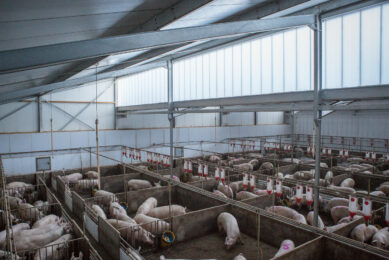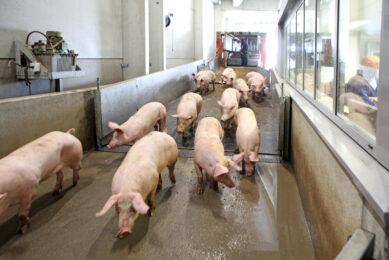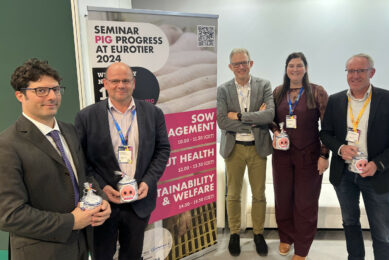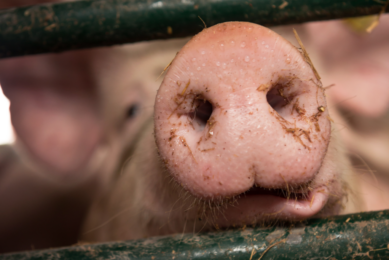Branched chains for enrichment in pig houses
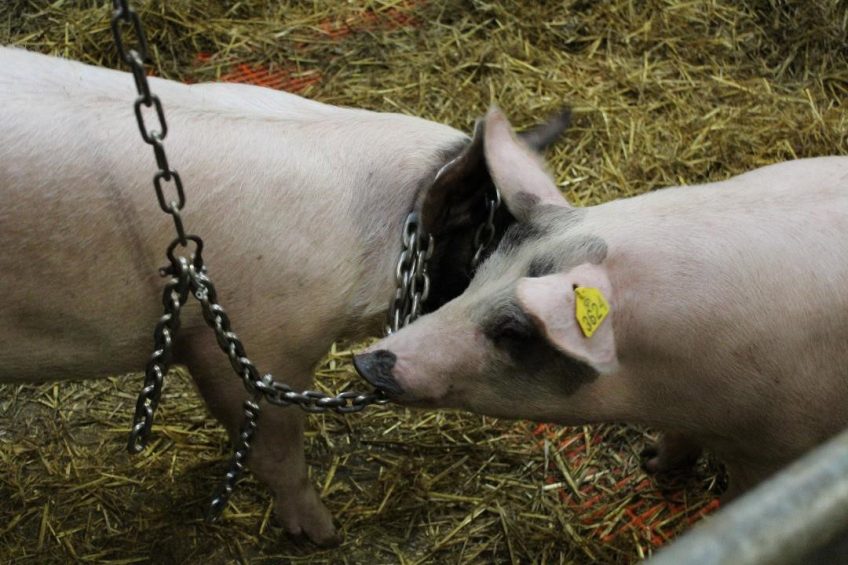
Branched chains should be implemented widely and in the short term as a 1st step towards, and benchmark for, providing proper enrichment to intensively-farmed pigs.
A branched chain is described as a vertically-positioned long chain with its end resting on the solid floor over a distance of 20 cm. In addition, 2 or 3 additional chain ends (branches) end at or slightly below the nose height of the smallest and middle-sized pigs reared in the pen.
The enrichment material came out best in an expert opinion, authored by scientists of Wageningen University & Research, the Netherlands, in a recently published contribution in Plos One.
Pig enrichment materials – are they good or not?
In that article, the authors described how they asked mostly fellow pig-welfare scientists about their opinion about currently allowed pig enrichment material in the European Union.
The article refers to the European directive 2001/93, which requires that all pigs have access to proper investigation and manipulation materials. The authors wrote, “Intensively farmed pigs in Europe are frequently provided with a short metal chain with or without an indestructible object attached to the chain. To date authorities are regarding this as proper enrichment.”
The authors continued to write, “However, it has become increasingly clear that the chains do not provide proper enrichment, and that adding an indestructible object to the end of the chain may even reduce rather than improve pig welfare. To test this hypothesis an expert survey was conducted containing 26 more or less compound questions.”
9 indestructible pig toys scrutinised
On a scale from 0 to 10, the experts specified their level of agreement with the hypothesis, the prevalence and welfare scores of 9 indestructible enrichment materials. In total 36 experts, mostly pig-welfare scientists, responded (response rate: 39%).

The authors wrote: “Indestructible objects are less prevalent in countries that provide straw (like Sweden and the UK) and outside the EU (US). They are more prevalent in the Netherlands, Belgium, France and Finland, while the prevalence seems to be low in Spain.
“Balls, wood and pipes were provided most frequently: hard wood especially in the UK (as specified in farm assurance); indestructible balls and pipes in Germany and the Netherlands.”
Enrichment materials for pigs ranked
The authors wrote that the experts’ score for agreement with the hypothesis was only 4.6 on average (scale 0-10; of in total 25 scientists responding agreed). Enrichment materials, ranked from high to low welfare score, were grouped in 5 significance levels:
- Branched chains (5.1);
- Chain on the floor (4.4);
- Hard wood (3.7);
- Pipe (3.5);
- Bare chain (3.3);
- Short chain (3.1);
- Small ball (2.8);
- Big ball (2.5); and
- Chain hanging too high (1.3).
Branched chains scored significantly better than all other indestructible materials and its welfare score (5.1 on average) was close to the pre-defined level of acceptability (5.5 on a scale from 0, worst, to 10, best). The welfare benefits of adding balls, pipes or hard wood to the metal chain were marginal, and well below what the experts considered acceptable enrichment.

Advantages of the branched-chains design
The branched-chains design, by contrast, appeared to be the most viable alternative, the researchers wrote. The researchers recommended 1 branched chain per 5 pigs. In the article they described the advantage of the branched-chains as follows: “In particular, balls hanging on short chains on commercial farms were dry and collecting dust. When trying to bite the balls, the pigs failed to grab them, and the pigs interacted more with a short metal chain than with the same chain which had either a ball or a piece of pipe attached to it.”
The entire article in Plos One was authored by Dr Marc Bracke and Paul Koene, Wageningen University & Research, the Netherlands.



